Ah, the sixties Batman series. Most superhero dorks have probably at least heard of it, even if only in the context of “that show that made nobody take comics SERIOUSLY anymore.” Because, as we all know, comic books were serious business in the 1960s. By the way, have you been to the World of 1,000 Olsens? Lovely this time of year. Just don’t make eye contact with the locals.
The story of Batman begins in 1965 at ABC, which was trailing NBC and CBS rather badly in the ratings (good to know some things never change) and was looking for a way to catch up. Upon noticing the earlier successes of television’s The Adventures of Superman and a recently re-released Columbia movie serial called An Evening with Batman and Robin, they decided that a superhero program might do the trick. They quickly secured the rights to Batman and Co., and production duties were given to executive producer William Dozier (who would also become the show’s all-seeing all-knowing narrator). This may not have been the smartest decision the ABC execs ever made, as Dozier knew nothing about comic books and wasn’t particularly fond of the ones he had read upon being given Batman. On the other hand, it was his idea to make the show a campy parody of the comics instead of a straight-up action show, and thus the Batman we know and love (stop denying it, yes you do) was born. The show debuted on Wednesday, January 12, 1966 and almost instantly became the subject of a national Bat-craze. Suddenly, Batman and Robin were EVERYWHERE—lunchboxes, the cover of TV Guide, hairstyles (yes, there was a Bat-hairstyle)… More than once, I’ve heard tell of the Three B’s of the Sixties—the Beatles, (James) Bond, and Batman. Surely a program that had such a huge impact on not just superheroes but also on the general public deserves to be discussed, even if only by a newbie blogger such as myself. So let’s get started, because today, we’re going to cover all thirty-four episodes of the first season of Batman.
The show’s format is incredibly creative: each episode is a two-parter which originally aired on two different nights, so the first part always ended in a cliffhanger to get the audience to come back the next night and watch the conclusion. The premise? “Millionaire Bruce Wayne and his youthful ward Dick Grayson” (get used to that phrase) fight crime as Batman and Robin, responding to urgent calls for help from the police department via the specially-made Bat-phone. Together, they do their level best to eradicate all traces of crime from the fair city of Gotham, where the water supply is routinely doped with stupid pills to prevent the citizenry from discovering that Batman, Robin, Bruce and Dick are only two people.
Bruce lets his butler answer the Bat-phone for crying out loud!
The Caped Crusaders are exactly as you’d want them to be—stolid, righteous, brave, and self-sacrificing. I suppose modern audiences may find them a bit bland, because the qualities I mentioned are basically their only qualities, and nowadays, we tend to expect our heroes to be a bit more flawed (and in Batman’s case, a bit more of a jerk). But personally, I never had a problem with them because they’re still so entertaining to watch. Batman’s hyper-always-be-preparedness is ramped up to eleventy billion, and his line delivery would make Shatner tell him to get on with it. Robin is slightly less perfect, being an impulsive and occasionally shortsighted teenager who is very eager (some may say a little too eager) to learn the ropes of crime-busting.
Speaking of good guys, we’ve got a small cast of side characters who aid Batman and Robin in their mission. Commissioner Gordon is great, mostly because Neil Hamilton takes the part so seriously. Just watch his performance—he’s treating this like it’s Shakespeare. As far as live-action interpretations go, this man IS Commissioner Gordon. Chief O’Hara is nowhere near as serious, though he’s just as dedicated to the job as any of the others. Occasionally he’ll bumble upon a clue, but he’s honest and he tries hard and he gets some funny lines. He does seem to be making a bit of a comeback lately, appearing in the 2004 fan video Grayson and various comics. This is in spite of being killed off in 1999’s Batman: Dark Victory, by the way, (I’m guessing Jeph Loeb feeds off the tears of devastated fangirls) and you can’t really argue with a character who has that much staying power.
Last but never least, there’s trusty Alfred Pennyworth, Bruce Wayne’s butler and the only person who is in on Bruce and Dick’s little secret. Alfred’s presence is quite significant for two reasons. One, this seems to be the genesis of the dignified Alfred that we know and love today. If you look at Alfred’s portrayal in comics from the 1940s, he’s practically unrecognizable—slightly dimwitted, overweight comedy relief with an extremely thick accent.
…That was supposed to be English, yes?
Alfred did slim down by the end of the decade, but he was still largely a comedic character, and he was killed off altogether in 1964. That lasted about as long as it took the producers of the TV show to decide that they liked him. The comics immediately set about reviving the character in a manner so ridiculous that Jason Todd must have taken it as a challenge during his own resurrection years later (there’s an evil scientist and Frankenstein-inspired experiments, etc.). In any event, TV’s Alfred is very prim and proper and willing to do anything to assist his employers, from going undercover to making sure Batman and Robin get enough to eat.
And then we have our fabulous Rogues Gallery. Ten baddies are introduced this season, including the four big ones we all know by heart—Riddler, Penguin, Joker, and Catwoman. I genuinely have a hard time picking a favorite villain from this show, and it’s mostly thanks to these four (as well as a fifth, but all in due time). Every single one of them was born to play these roles; take a look at Jim Carrey’s Riddler from Batman Returns, Tom Kenny’s Penguin from The Batman, and almost every Catwoman (and Catwoman costume) since then. All of them—and others that I haven’t mentioned, I’m sure—owe a massive debt to the ‘60s series.
There is, of course, a laundry list of other villains of varying degrees of impressiveness. Mr. Freeze is played by George Sanders, who is by far my favorite actor in the role. We’ll get to the others in Season Two, but Sanders seemed to strike the right balance between serious threat and utterly ridiculous, so he fits right in with the rest of the show. He even shows hints of the more tragic villain that Mr. Freeze eventually became (e.g. expressing regret over the fact that he’ll never get to enjoy summer breezes and fireplaces again). I don’t know why Sanders didn’t reprise the role in the second season, but the character really suffers from his loss.
Next up is Zelda the Great who is, well, less than great. She is basically a moll (the whole lot of whom I will discuss in a bit) who just happened to get higher billing; all of her strings were pulled by “mad Albanian genius” Eivol Ekdol. I guess “great” was easier to rhyme for the title than “Ekdol”. (All of the episode titles rhyme, e.g. “Zelda the Great” and “A Death Worse Than Fate”.) Plus Zelda/Anne Baxter was a bigger star than Ekdol/Jack Kruschen, so… She had an interesting concept—an escape artist forced into a life of crime to pay off the guy who made her famous—but is a bit too predictable to live up to her name.
David Wayne’s Mad Hatter is really over-the-top, especially in the way he delivers his lines, but that’s precisely the point. I don’t have all that much to say about him other than that he was a lot of fun to watch. He’s also a bit more graphic in his descriptions of exactly what his death trap will do to the Dynamic Duo (except maybe for the episode where the Riddler uses a medieval torture device on Robin), which kind of surprised me, but he’s very enjoyable. It’s always more fun to watch something when you can tell the actors were having a grand old time, and that is frequently the case with this show, but David Wayne was clearly giving his all.
False-Face is okay, I guess. He’s sort of like a watered-down version of Clayface, and he’s not as colorful or campy as the others (though he did dress up as a granny to escape the heroes). He can be genuinely menacing (e.g. the scene where his reflection appears in the candy machine after Batman is knocked out) and there’s nothing actually wrong about him, but he’s just not as interesting as the others. Definitely the weak point of the season.
Look upon the face of mediocrity… or would that be the false-face of mediocrity?
The next guy, on the other hand, is one of the most underrated highlights of the entire series, and I have no idea why it took over forty years for him to make it into the comics (and even then, he was apparently almost unrecognizable in comic book form). King Tut, portrayed brilliantly by Victor Buono, is an Egyptology professor who, whenever he gets hit on the head, believes himself to be that most well-known of Egyptian pharaohs. He’s unique among the Season One villains in that he doesn’t really want to hurt anybody or do anything wrong, he’s just a sick man who can’t help himself. This makes his professor persona a very sympathetic character… while his King Tut persona is a spoiled, overgrown kid who must have been raised on pure ham to give a performance like this. I still can’t figure out which Bat-villain is my favorite, but King Tut rounds out the top five for me.
And finally, we come to the Bookworm (Roddy McDowall). Like with Tut, I always felt he was criminally (heh) underrated. The fact that he uses book covers made of asbestos makes me think “And then everybody died of cancer, the end” whenever I watch the episode, but he was genuinely entertaining in his own right. Compared to the other villains, Bookworm tends to be pretty calm and gives off an air of true intelligence (as opposed to just shrewdness), but he was still really interesting and had moments of craziness. It’s a shame this was his only appearance—with all the books in the world, he had tons of potential. Thankfully, his spirit lives on in characters like Teen Titans’ Control Freak, who steals from film instead of books, and in McDowall’s performance as the Mad Hatter in Batman: The Animated Series, so it wasn’t a total loss.
The show’s attitude towards villainesses (as they call them) is also established during this introductory season. None of them ever fight, for starters—while Mrs. Emma Peel was busy kicking butt on The Avengers (no, not those Avengers), the Bat-villainesses just stand in a corner watching the action. The vast majority of female baddies are sidekicks/molls to the male villains, and not only that, a good chunk of them get the “poor deluded girl” treatment from Bats and the rest, which miffs me to no end. It started with Riddler’s creatively named moll Molly in the pilot—despite the fact that she never once showed any form of remorse and genuinely seemed to get a lot of pleasure out of her job, Batman automatically assumes she’s “deluded” and that she’s got no idea what she’s doing, that she was somehow manipulated into a life of crime.
Is this the face of a woman unhappy with her career choice?
The rest of the season progresses along the same lines, except a lot of the other molls (Zelda, False-Face’s Blaze, and Joker’s Suzie in particular) really do suffer from Poor Deluded Girl Syndrome and repent by the end of the episode—or, at the least, fall in love with Batman. And when they don’t show any remorse, the police occasionally cart out an excuse (absentee parents, broken home, etc.) to make us feel bad for them anyway. It wouldn’t be so bad if there were a few male henchmen who also regretted getting into crime but… no. The closest we get is Catwoman’s henchman Felix, a nervous little guy who would probably be much happier living an honest life, but Batman never gives him the benefit of the doubt or tries to help him reform the way he does with the women. He just slugs him and drags him off to jail with the rest of the crooks. It seems like women have no autonomy whatsoever and just sit around waiting for a man—any man, good or evil—to come along and tell them what to do. Men, on the other hand, aren’t allowed to make mistakes, and if they do, they get a punch in the face instead of sympathy. The only way for a man to “earn” Batman’s assistance is by having a physical or psychological problem, as Batman offers help to both Mr. Freeze and King Tut with rather different results.
The only exception to this rule is, of course, the Catwoman, played by Julie Newmar. (Michelle Pfeiffer? Never heard of her.) Yes, she’s sexy and wears a skin-tight body suit, but she’s just as ruthless, greedy, and powerful as any of the male villains—maybe even more so, considering she was willing to betray her henchmen and even sacrifice her own life to get what she wanted. She is a career woman first and foremost, more interested in being a sufficiently sinful supervillain than in settling down with a man. She is respected and feared by her henchmen, the police, and Batman and Robin, though all for different reasons. That sort of gets kicked to the curb by the end of Season Two, but for her sole Season One appearance, Catwoman is truly refreshing.
While we’re on the subject of female characters, I guess we can’t conclude this discussion without bringing up Harriet Cooper, Dick Grayson’s aunt. She’s not really much of a character. I don’t hate her—I mean, she can be a bit annoying at times, but she doesn’t really do enough for me to hate her. Her only job is to magically appear at (in)convenient times and ask where Bruce and Dick think they’re rushing off to in such a hurry. This fact only adds fuel to the rumors that she was added to the series for the express purpose of quashing the idea that there was any hanky-panky going on between the two main characters. Apparently, she was first added into the comics in 1964 to replace the recently deceased Alfred, but now that Alfred is back, her presence is entirely pointless—except, of course, if she was there to balance out the testosterone. But if she was cast to counteract the gay rumors, I think it did the exact opposite. If Dick Grayson had an aunt this whole time, then why didn’t she take him in after his parents were killed instead of having a stranger take them both in? It reads more like a sitcom where the main couple gets stuck living with an irritating in-law. And lines like “Or are millionaire Bruce Wayne and his youthful ward Dick Grayson up to something else this morning in stately Wayne Manor?”, spoken by the narrator with a slightly sinister tone in his voice, do not help. Even those of us who don’t wear the slash goggles too tightly start to get a little suspicious.
Okay, so they were only admiring this statuette thingy… but still!
In spite of the woman troubles (which persist throughout the series), I’d have to say that Season One is the best. The show was still in a bit of an experimental phase and, while it did follow a basic formula, it didn’t follow it as strictly as it would later on. For instance, the famous cliffhanger endings didn’t always end with Batman and Robin in a complicated death trap—sometimes, it was just one or the other. Sometimes it was Bruce Wayne who was about to be killed. Sometimes it was Aunt Harriet. Sometimes there wasn’t a death trap at all—in the Joker’s debut episode, he didn’t try to kill Batman and Robin, he just restrained them and was about to pull off their masks on live television when the cliffhanger struck. I’m going to elaborate on this when I get to Season Two, but the death traps aren’t nearly as crazy now as they became later on. They were, for lack of a better term, more believable during Season One, which made the villains that much more threatening and effective.
This is also the season where we get to see the most of Bruce and Dick as Bruce and Dick (e.g. the Joker episode that largely takes place at Dick’s high school), with the possible exception of the feature film that came out later that year. The point is, Batman was at its most creative and innovative during this season. The amount of effort put into making Batman the best it could be is obvious, with two main exceptions. First, the bits where Gordon and O’Hara decide to call in Batman, during which I swear they repeat the exact same lines at least ten episodes in a row. Second, the first two sets of Penguin episodes—“Fine Feathered Finks/The Penguin’s a Jinx” and “The Penguin Goes Straight/Not Yet He Ain’t”—share a lot of the same elements. They aren’t carbon copies of each other, but they have enough in common (umbrellas rigged to expel gas or confetti as a distraction; a beautiful and rich woman caught up in Penguin’s schemes; setting up a supposedly legit business to cover his illegal activities; and the heroes trying to plant a bug on him only to end up being caught) to let you know that the writers were either still trying to sort out an M.O. for the Penguin or were just too lazy to come up with anything else. But none of this really gets in the way of enjoying the show (not for me, anyway), and I stand behind my earlier statement that Season One is the most creative.
The cast and crew (and viewers!) were rewarded for their efforts by the fact that this is the only season without a single bad episode. Sure, some of the episodes were less enjoyable or imaginative than others, but none of them is even remotely bad. All of them are fun and get plenty of laughs. If you were to ask me to name my favorite Season One episode, I’d probably point you towards the Catwoman episodes, “The Purr-fect Crime/Better Luck Next Time.” It’s a tough call, but these episodes really seem to epitomize everything that was so fantastic about Season One—goofy lines juxtaposed with psychological torture at the hands of an intimidating and ruthless yet highly entertaining villain. Also, kittens.
D’awwww, wookit his widdle face…
Everything’s so lively and colorful, and the dialogue sounds like it was lifted directly out of a comic book—over-dramatic, expository, and hilarious. It’s easy to see why audiences of the sixties got so obsessed so quickly. It’s unlike anything that was on back then, and heck, it’s still ahead of its time. And while I do love many if not most of the episodes from Season Two, Season One remains the gold standard that the show, unfortunately, just couldn’t keep up with for long.
Next Time: The first of a four-part Valentines’ special, or Why Gonzo Hates Devin Grayson with the Rage of a Thousand Red Lanterns, Part One.
Images from Jimmy Olsen #105, Batman, and Batman #20
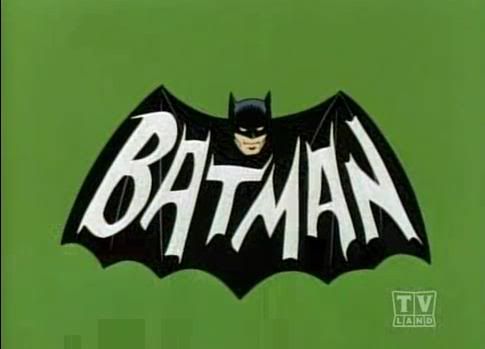
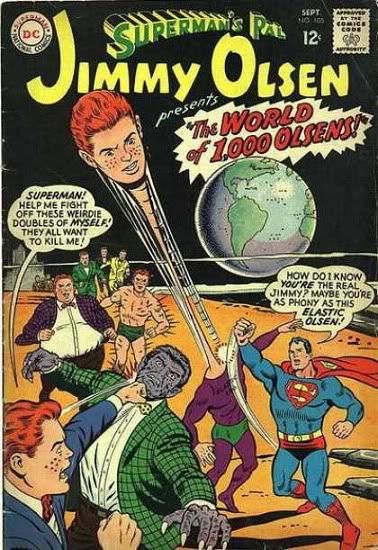
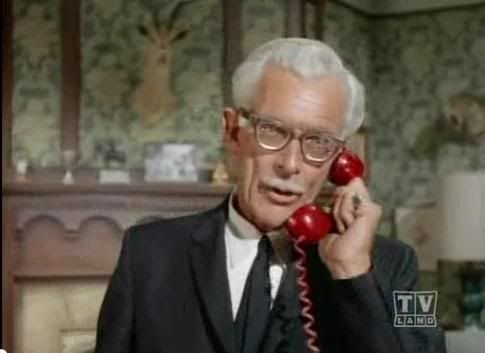
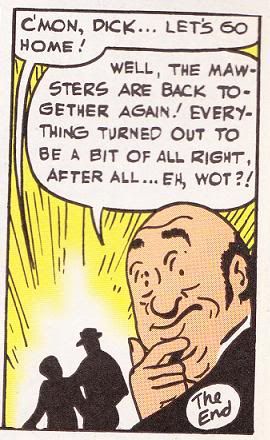
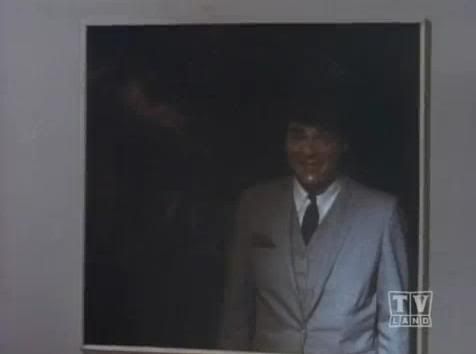


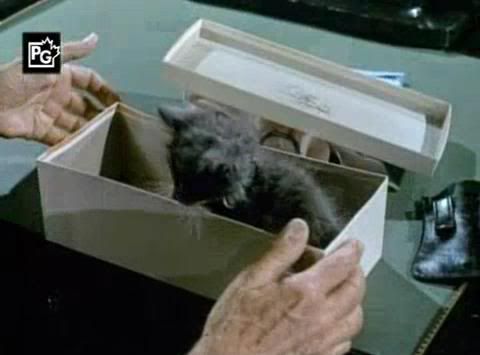
No comments:
Post a Comment